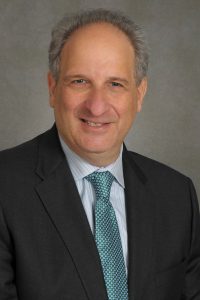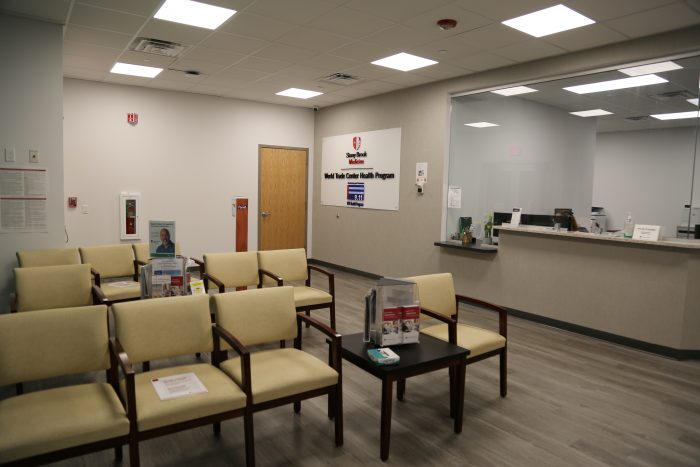Twenty years after 9/11 Stony Brook doctor continues to help first responders
Dr. Benjamin Luft remembers the feeling of being prepared to treat 9/11 survivors and then no one arrived at the hospital.

Stony Brook University was among local medical facilities that were prepared for the arrival of 9/11 victims when Luft was the chairman of the Department of Medicine. He said, like others, he had seen the towers falling on television, and from the 16th floor of SBU’s Health Sciences Tower, he could see the smoke from the World Trade Center.
“The idea was that there was going to be real mass casualties, and that this would overwhelm the system in New York,” he said.
Medical teams from various departments met in the conference room of the Department of Medicine, but he said “it became obvious as time went on, that there was no one coming to Stony Brook.”
“It was eerily ominous, because we began to understand that either people had escaped the buildings, or … that there were relatively few survivors from the attack itself,” the doctor added.
He said anyone seeking treatment stayed in the city, and the hospitals in Manhattan weren’t overrun as originally anticipated.
Luft, who is now the director and principal investigator at Stony Brook WTC Wellness Program, said after the tragic day he visited Ground Zero to see what was happening at the site. It was there he witnessed what first responders were being exposed to while working.
“It was obvious that there was going to be a lot of responders that were going to become ill as a result of that, because there was a tremendous amount of dusts and toxins in the air,” Luft said. “There was a lot of fire, burning, and there was a lot of fumes that came off of burning plastic and electronics.”
He added there were traumatizing events that people at the site experienced such as seeing bloody human parts and, for earlier responders, people jumping out of the towers.
He said shortly after September 11, local labor leaders met with him and told him how many of those first responders lived on Long Island and were getting sick. He learned that while many were insured, their insurance wasn’t covering their health issues due to them volunteering and not doing what the insurance companies considered on-the-clock work while helping to clean up and recover victims at Ground Zero.
The struggle of the Long Island first responders led to the development of the Stony Brook WTC Wellness program. In 2002, patients at first were just screened and monitored and then in 2005 doctors began treating them. Luft said in the early days of the program SBU Department of Medicine employees would volunteer to treat the patients. Over time the program began to receive financial resources to expand its services.

Luft said the program follows the cases of approximately 13,000 Long Islanders in both Nassau and Suffolk counties, with one clinic in Commack and the other in Mineola. At first, patients were displaying acute reactions to their exposure. Cases included asthma, upper respiratory disease, sinusitis and gastrointestinal disease, he said, due to the amounts of dust the patients had taken in during their time at Ground Zero.
Over the years, the doctor said patients began developing illnesses such as cancer, but doctors have also seen psychiatric problems such as PTSD and depression.
The responders “had seen people die,” he said. “They were in danger all the time.”
Doctors are also seeing cases of dementia in patients. Luft said one theory is that when a person is exposed to certain toxins it can increase their chances of having dementia. He gave the example where areas with higher pollution have much higher rates of Alzheimer’s.
With studies showing that patients with PTSD have cells that age more quickly, the WTC Wellness Program began monitoring patients.
“We saw something that stunned us, and quite frankly at first we were very skeptical,” Luft said. “We went through a variety of different studies and tests to confirm our results.”
Twenty years after September 11, the doctor said it’s possible that first responders will present with more health issues in the future, but no one can be certain with what illnesses.
The Stony Brook WTC Wellness Program’s Suffolk County office is located at 500 Commack Road, Commack.







